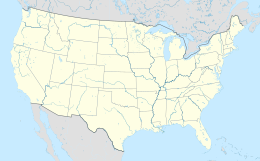Prince's Bay station
|
Prince's Bay
|
||||||||||||||||||||||||||||||||||||||||||||||||||||||||||||||||||||||||||||
|---|---|---|---|---|---|---|---|---|---|---|---|---|---|---|---|---|---|---|---|---|---|---|---|---|---|---|---|---|---|---|---|---|---|---|---|---|---|---|---|---|---|---|---|---|---|---|---|---|---|---|---|---|---|---|---|---|---|---|---|---|---|---|---|---|---|---|---|---|---|---|---|---|---|---|---|---|
| Staten Island Railway rapid transit station | ||||||||||||||||||||||||||||||||||||||||||||||||||||||||||||||||||||||||||||

Northbound platform
|
||||||||||||||||||||||||||||||||||||||||||||||||||||||||||||||||||||||||||||
| Station statistics | ||||||||||||||||||||||||||||||||||||||||||||||||||||||||||||||||||||||||||||
| Address | Seguine Avenue & Waterbury Avenue Staten Island, NY 10309 |
|||||||||||||||||||||||||||||||||||||||||||||||||||||||||||||||||||||||||||
| Borough | Staten Island | |||||||||||||||||||||||||||||||||||||||||||||||||||||||||||||||||||||||||||
| Locale | Prince's Bay | |||||||||||||||||||||||||||||||||||||||||||||||||||||||||||||||||||||||||||
| Coordinates | 40°31′31″N 74°12′01″W / 40.5254°N 74.2003°WCoordinates: 40°31′31″N 74°12′01″W / 40.5254°N 74.2003°W | |||||||||||||||||||||||||||||||||||||||||||||||||||||||||||||||||||||||||||
| Services |
Local Express |
|||||||||||||||||||||||||||||||||||||||||||||||||||||||||||||||||||||||||||
| Transit connections |
|
|||||||||||||||||||||||||||||||||||||||||||||||||||||||||||||||||||||||||||
| Structure | Open-cut | |||||||||||||||||||||||||||||||||||||||||||||||||||||||||||||||||||||||||||
| Platforms | 2 side platforms | |||||||||||||||||||||||||||||||||||||||||||||||||||||||||||||||||||||||||||
| Tracks | 2 | |||||||||||||||||||||||||||||||||||||||||||||||||||||||||||||||||||||||||||
| Other information | ||||||||||||||||||||||||||||||||||||||||||||||||||||||||||||||||||||||||||||
| Opened | June 2, 1860 | |||||||||||||||||||||||||||||||||||||||||||||||||||||||||||||||||||||||||||
| Station code | 517 | |||||||||||||||||||||||||||||||||||||||||||||||||||||||||||||||||||||||||||
| Former/other names | Lemon Creek | |||||||||||||||||||||||||||||||||||||||||||||||||||||||||||||||||||||||||||
| Station succession | ||||||||||||||||||||||||||||||||||||||||||||||||||||||||||||||||||||||||||||
|
||||||||||||||||||||||||||||||||||||||||||||||||||||||||||||||||||||||||||||
|
||||||||||||||||||||||||||||||||||||||||||||||||||||||||||||||||||||||||||||
|
||||||||||||||||||||||||||||||||||||||||||||||||||||||||||||||||||||||||||||
Prince's Bay is a Staten Island Railway station in the neighborhood of Prince's Bay, Staten Island, New York.
The station opened on June 2, 1860 as Lemon Creek, with the opening of the Staten Island Railway from Annadale to Tottenville. Prior to being placed in an open-cut the station consisted of a small platform connected to a small station house, which was connected to a two-story house. The platform could be reached by going up a short staircase.
It is located near Seguine Avenue and Amboy Road on the main line. It's in an open-cut with two side platforms, green canopies, and walls of steel and concrete. There is an exit/entrance on the south end of each platform that allows access to Seguine Avenue; and an exit/entrance on the northern end of the St. George (north) bound platform that allows access to a small free commuter park & ride lot that is accessible from Herbert Street. A railroad spur leading to the St. George-bound tracks also exists just outside of this parking lot. Maps do not show the station name with apostrophe while the station signs do. The latter is the historically correct (and official) name. This station was the last all-timber platform on the line before being replaced in the early 1990s.
...
Wikipedia



